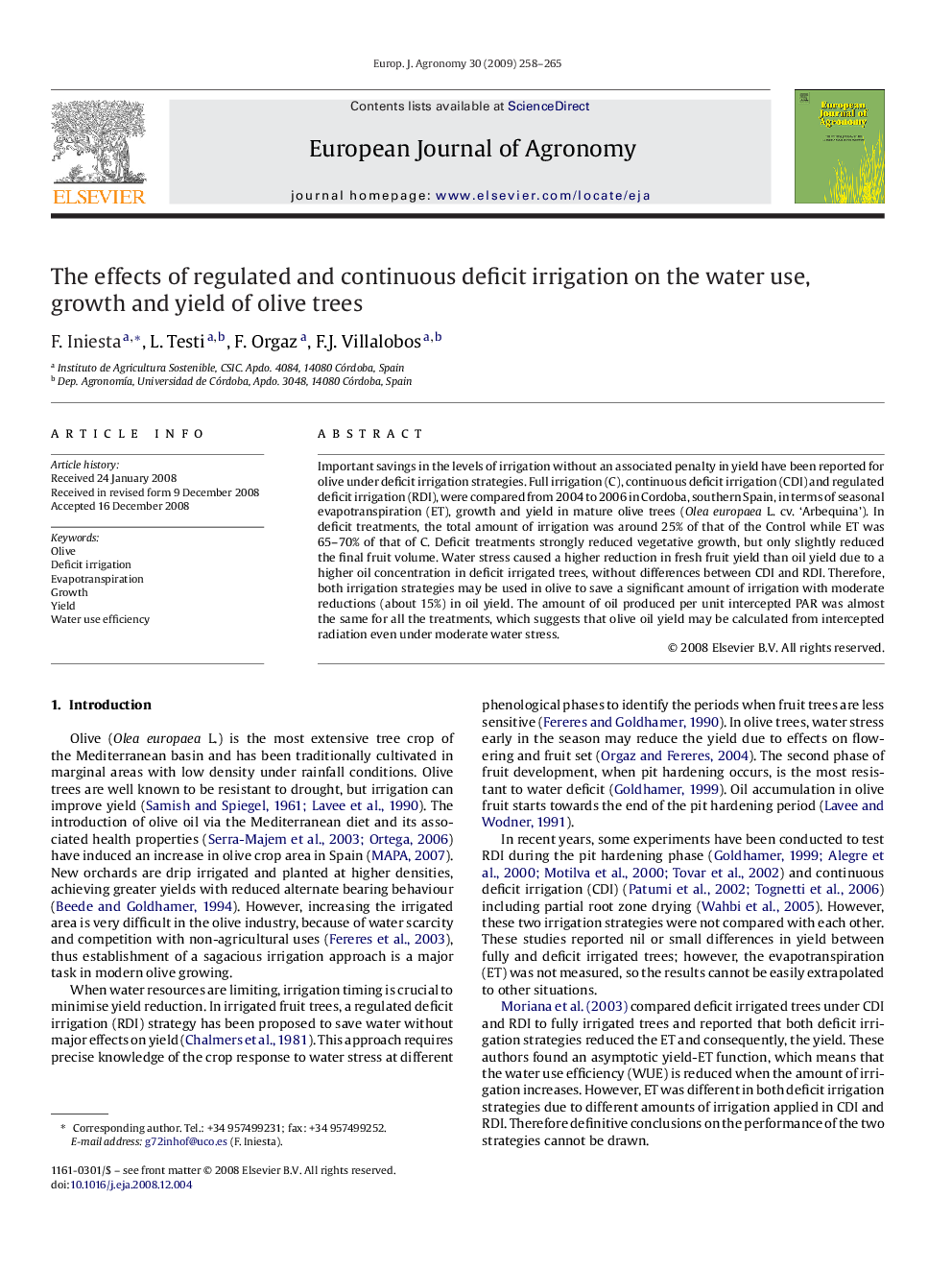| Article ID | Journal | Published Year | Pages | File Type |
|---|---|---|---|---|
| 4509441 | European Journal of Agronomy | 2009 | 8 Pages |
Important savings in the levels of irrigation without an associated penalty in yield have been reported for olive under deficit irrigation strategies. Full irrigation (C), continuous deficit irrigation (CDI) and regulated deficit irrigation (RDI), were compared from 2004 to 2006 in Cordoba, southern Spain, in terms of seasonal evapotranspiration (ET), growth and yield in mature olive trees (Olea europaea L. cv. ‘Arbequina’). In deficit treatments, the total amount of irrigation was around 25% of that of the Control while ET was 65–70% of that of C. Deficit treatments strongly reduced vegetative growth, but only slightly reduced the final fruit volume. Water stress caused a higher reduction in fresh fruit yield than oil yield due to a higher oil concentration in deficit irrigated trees, without differences between CDI and RDI. Therefore, both irrigation strategies may be used in olive to save a significant amount of irrigation with moderate reductions (about 15%) in oil yield. The amount of oil produced per unit intercepted PAR was almost the same for all the treatments, which suggests that olive oil yield may be calculated from intercepted radiation even under moderate water stress.
